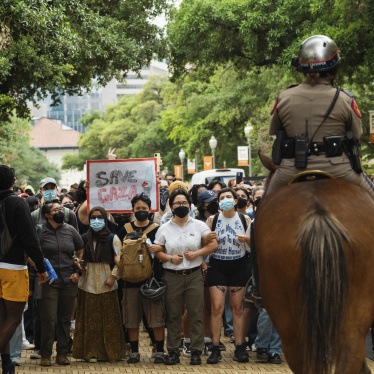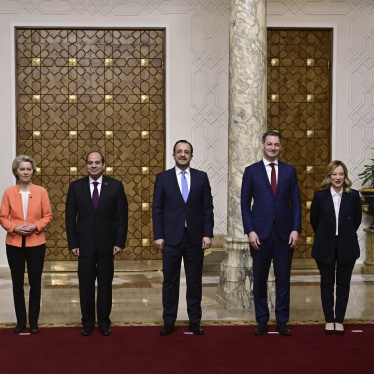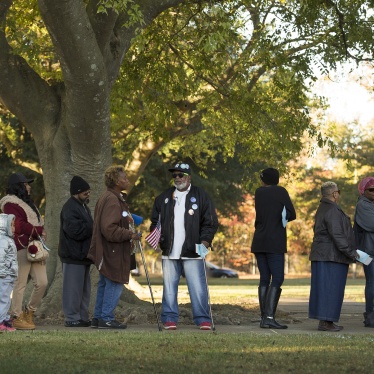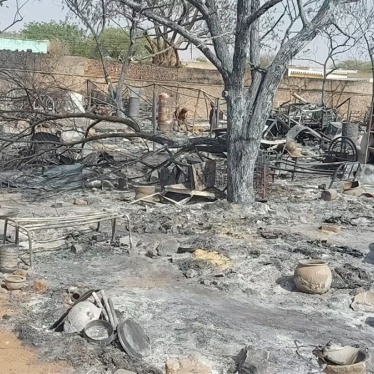While Baghdad burned, Donald Rumsfeld fiddled. Questioned about the orgy of looting and pillaging taking place under the gaze of U.S. forces, Rumsfeld criticized the media for exaggerating the extent of the damage.
"The images you are seeing on television, you are seeing over and over and over," he complained. "It's the same picture of some person walking out of some building with a vase and you see it twenty times. And you think, my goodness, were there that many vases?"
After pausing for laughter, Rumsfeld delivered the punch line: "Is it possible that there were that many vases in the whole country?"
Well, yes, as it turns out, it is possible. And the loss of such artifacts is no laughing matter, at least to people who care about these things. Many of the irreplaceable objects lost in Baghdad's days of anarchy and turmoil were thousands of years old, material evidence of humanity's earliest strivings. They came from places like Babylon, Kalkhu, Nineveh and Ur, ancient cities dating back to the dawn of history.
Last week, after two days of unhindered pillage, the Baghdad museum that housed these treasures was emptied. By Friday afternoon, when Rumsfeld made his dismissive remarks, looters were carting away the last spoils. According to the museum's deputy director, who blamed U.S. forces for refusing to prevent the plunder, at least 170,000 items were taken or destroyed.
The pillage of the National Museum of Iraq should have come as no surprise. And if the risks were obvious, the legal responsibilities were equally clear.
The Lessons of Gulf War I
In 1991, at the close of the first Gulf War, nine of Iraq's regional museums were looted by rampaging mobs opposed to Saddam Hussein's government. While the national museum did not come under attack at that time, because the government retained firm control over Baghdad, it lost a number of artifacts that had been transferred to the regional museums for safekeeping.
In all, about 4,000 items were stolen or destroyed during the 1991 looting spree, including some that were thousands of years old. Some of the pieces were later smuggled out of Iraq, and were, by the following year, turning up at art auctions and in the hands of dealers in London and New York.
The lessons of this close precedent were not lost on archaeologists and scholars of antiquity. Well prior to the outbreak of the current war, they warned the Pentagon of the dangers to Iraq's cultural heritage posed by postwar pillage and destruction.
The Legal Responsibility to Protect Cultural Property
Under the laws of war, the United States is obligated to ensure public order in territories that it occupies, and to prevent looting and other forms of lawlessness. More specifically, it is required to protect museums and other cultural property against damage.
The primary international treaty on this point is the Convention for the Protection of Cultural Property in the Event of Armed Conflict, drafted in 1954. The convention specifies that an occupying power must take necessary measures to safeguard and preserve the cultural property of the occupied country.
Because this rule codifies customary international law, it is binding even on countries such as the United States that have signed but not ratified the convention. (Iraq, in contrast, is a party to the convention, as are 102 other countries.)
Interestingly, international rules to protect cultural property from looting and damage are an American innovation, dating back to the Civil War. Revulsion at widespread destruction during that war led to the drafting of the Lieber Code, which gave protected status to libraries, scientific collections and works of art. The Lieber Code's protections had a significant influence on the development on international law in this area, culminating in the drafting of the 1954 convention and its subsequent protocols.
Of course, the U.S. responsibility to protect Iraq's cultural property is not absolute. Legitimate battlefield demands might well take priority over the duty to protect. But even if an investigation is necessary to clarify whether U.S. forces failed in their duties, the evidence of negligence available so far is compelling.
Not only did the Pentagon have prior notice of the likelihood of looting, museum officials reportedly called on troops to stop the plunder just after it began. At the urging of an Iraqi archaeologist, a group of marines with a tank opened fire above looters' heads and drove them away. But instead of staying to protect the building, the marines left, and the looters returned.
The museum's deputy director decried the American refusal to help: "If they had [provided] just one tank and two soldiers nothing like this would have happened."
Rumsfeld's Response
"Stuff happens," Rumsfeld told a Pentagon news briefing on April 11, when asked about widespread looting in Baghdad.
"But," he continued, "it is a fundamental misunderstanding to see those images over and over and over again of some boy walking out with a vase and say, 'Oh, my goodness, you didn't have a plan.' That's nonsense."
Two days later, faced with overwhelming proof of mayhem in Baghdad, Rumsfeld again disavowed responsibility for the looters' rampage.
When the interviewer pointed out that Iraqi museum officials claimed that they had asked the U.S. military to protect the museum, and that the military had refused, Rumsfeld responded: "Oh, my goodness. Look, I have no idea."
Looting, he concluded "isn't something that someone allows or doesn't allow. It's something that happens."
An Avoidable Disaster
Looting most definitely happens when the authorities take no steps to prevent it. Unfortunately, the evidence suggests that this was the case with Iraq's National Museum and its priceless collection of artifacts.
The New York Times, in an article published yesterday, said that the ransacking of the National Museum will probably be remembered as "one of the greatest cultural disasters in recent Middle Eastern history." What is worse, it is likely to be remembered as a disaster that was avoidable.






